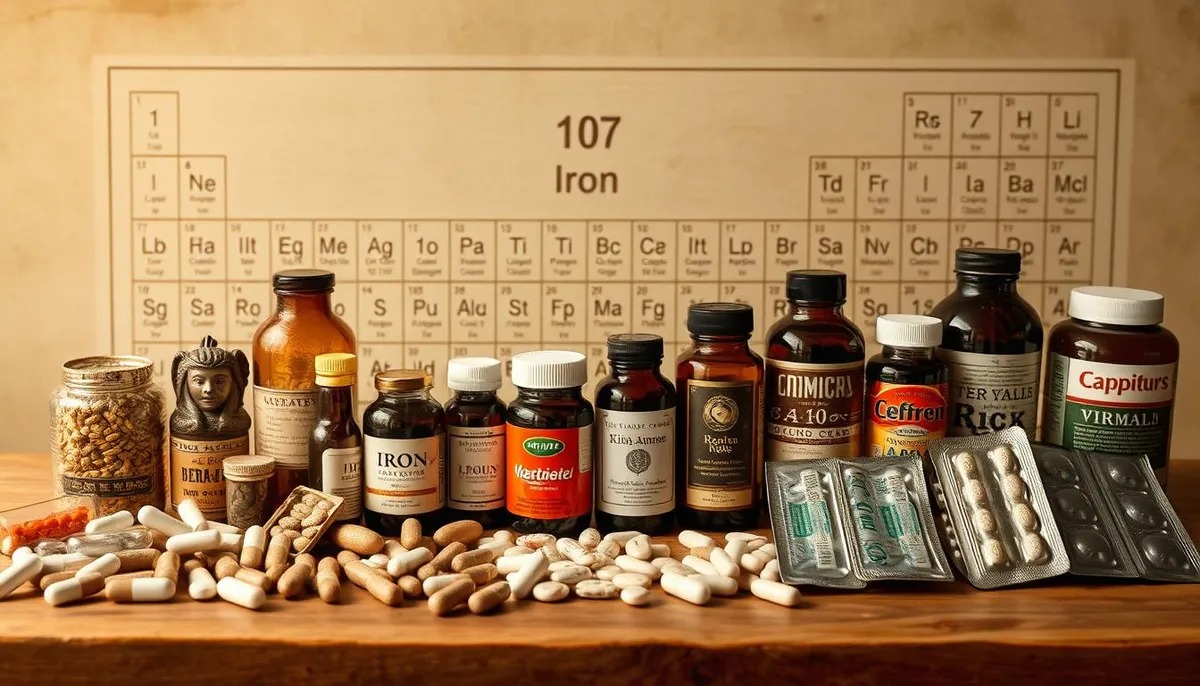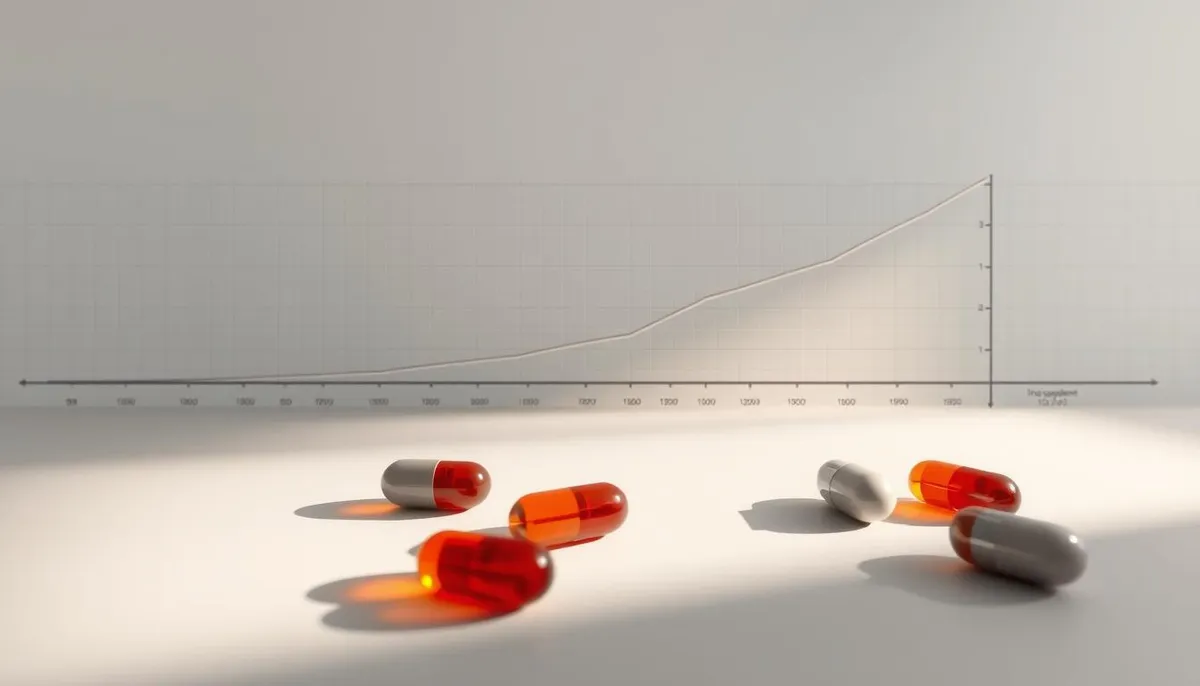Feeling tired and drained is a common experience for many. If you’re exploring options to boost your energy, you are not alone. A significant number of individuals worldwide deal with low iron.
This essential mineral plays a critical role in your well-being. It helps your body create red blood cells that carry oxygen to every part of you. Without enough, you can feel fatigued and weak.

This guide is here to help you understand what to expect. We will explore the journey of restoring your vitality. Knowing what to look for makes the process much clearer.
Our goal is to provide clear, science-backed information. You will learn practical strategies to support your health journey. This empowers you to work effectively with your healthcare provider.
Key Takeaways
- Iron deficiency is a widespread issue, impacting energy and overall health.
- Iron is vital for oxygen transport and maintaining daily energy levels.
- Setting realistic expectations is key to a successful supplementation journey.
- This guide provides a clear timeline for when you might notice improvements.
- You will learn practical tips to enhance the effectiveness of your regimen.
- Recognizing the signs of progress can help you stay motivated.
- Understanding the process makes managing your wellness less daunting.
Understanding Iron Supplements and Their Importance
Iron stands as a cornerstone mineral, fundamental to numerous processes that keep our bodies running smoothly. It acts as a vital component for overall wellness.
Role of Iron in the Body
This mineral’s primary job is to help create red blood cells. These cells carry oxygen from your lungs to every tissue and organ.
Without sufficient amounts, your cells cannot get the oxygen they need. This directly impacts your energy production. You might feel persistently tired.
Iron also supports your immune system and helps enzymes function properly. It is essential for cognitive health, making it crucial for more than just preventing anemia.
Common Causes of Iron Deficiency
Many factors can lead to low iron levels. A primary cause is not consuming enough iron-rich food. This is common with restrictive diets.
Sometimes, the body struggles with absorption, even with a good diet. Gastrointestinal issues can prevent proper utilization of the mineral.
Significant blood loss is another major contributor. This includes monthly menstruation, internal bleeding, or regular blood donation.
Certain life stages increase needs. Pregnancy, childhood growth spurts, and intense athletic training all demand more iron. Some health conditions and medications can also interfere.
| Group | Recommended Dietary Allowance (mg/day) | Key Considerations |
|---|---|---|
| Women (19-50 years) | 18 mg | Higher needs due to menstrual blood loss. |
| Pregnant Women | 27 mg | Supports fetal growth and increased blood volume. |
| Men (19+ years) | 8 mg | Generally lower requirements than pre-menopausal women. |
| Adolescents | 11 mg (boys) / 15 mg (girls) | Rapid growth increases demand. |
Understanding these causes is the first step. It helps you and your healthcare provider address the root of the issue effectively.
How Long Iron Supplements Take to Work
Patience is essential when beginning a new wellness routine, as the body responds at its own pace. The timeline for seeing benefits varies significantly between individuals.
Timeline for Noticeable Improvements
Many individuals report feeling better within the first week of starting their regimen. Initial energy improvements often appear after about 14 days.
Complete restoration of mineral reserves requires more time. Most healthcare providers recommend continuing for three to six months. This allows the body to rebuild its stores properly.

Factors Influencing the Supplement’s Effectiveness
Several elements affect how quickly people see results. The severity of deficiency plays a major role in the duration needed.
Individual absorption capabilities and consistent use are crucial. Working with a medical professional ensures proper monitoring of your progress.
Signs Your Iron Supplement is Making a Difference
Your body often provides the first clues that your health is improving. Not everyone feels dramatic changes right away. This is perfectly normal and doesn’t mean your regimen is ineffective.
Improvement in Energy and Anemia Symptoms
If you did experience signs of low levels, you might notice them fading. A common early signal is having more energy throughout the day.
Tasks like climbing stairs may become easier. You might feel less breathless and dizzy. Your hands and feet could feel warmer as circulation improves.
Other physical signs can include stronger nails and a healthier skin tone. These changes happen as oxygen delivery gets better.
Monitoring Changes Through Blood Tests
The most reliable method to confirm progress is a simple blood test. Your doctor can check key markers like hemoglobin and ferritin.
This objective data shows if your iron levels are rising correctly. It’s the best way to know for sure that your plan is on track.
Always follow up with your healthcare provider for this crucial step.
Proper Methods to Take Iron Supplements
The way you consume your daily mineral support can significantly influence its success. Small changes in your routine can enhance how well your body utilizes this essential nutrient.
Establishing a consistent habit is the most important step. Finding a method that works for you ensures you stay on track.
Best Timing for Maximum Absorption
For optimal iron absorption, an empty stomach is ideal. Doctors often suggest a window of 30 minutes before a meal or two hours after.
This timing minimizes interference from other foods. It allows your system to process the mineral more efficiently.
Some individuals experience stomach discomfort with this approach. If nausea occurs, taking your dose with a small amount of food is a practical solution.
Enhancing Absorption with Vitamin C and Food Choices
What you consume around the time of your dose matters greatly. Certain items can help, while others may hinder the process.
It’s wise to avoid specific blockers when taking iron.
- Dairy and calcium-fortified items can reduce effectiveness.
- Coffee, tea, and wine contain tannins that interfere.
- High-fiber foods and antacids should also be spaced apart.
Many people pair their regimen with vitamin C. This includes a glass of orange juice or a supplement.
While some studies show mixed results, it remains a common practice. The goal is to find a sustainable routine for your day.
Consistency over many months is what truly rebuilds your levels. The perfect method is the one you can stick with.
Diet, Lifestyle, and Iron Absorption
Creating a supportive dietary environment is key to maximizing the benefits of any wellness regimen you follow. What you eat and when you eat it can make a real difference in how your system processes nutrients.
Iron-Rich Foods vs. Absorption Blockers
Your body processes two main types of dietary iron. Heme iron comes from animal sources like red meat and seafood. It’s absorbed more efficiently than non-heme iron from plant sources.
Many foods contain compounds that can block absorption. Dairy products, coffee, tea, and whole grains may interfere with how well your system utilizes this mineral. Even spinach, while iron-rich, contains natural inhibitors.
Pairing plant-based iron sources with vitamin C can help boost absorption. A small glass of orange juice with your meal makes a simple strategy.
Tips for Integrating Supplements into Your Daily Routine
Consistency is the most important factor for success. Find a method that fits naturally into your existing habits.
Many people set phone reminders or keep their daily dose in a visible spot. Pairing it with an established morning routine often works well. The goal is to create a sustainable pattern that becomes second nature.
Spacing your intake around meals can optimize results. A balanced approach supports both your dietary intake and supplement regimen.
Potential Side Effects and Managing Them
While many people tolerate mineral support well, some may experience temporary digestive adjustments. Understanding these potential reactions helps you stay prepared and comfortable during your wellness journey.
Common Gastrointestinal Side Effects
Digestive changes are the most frequent side effects people notice. These can include nausea, stomach cramps, constipation, or diarrhea.
Many individuals also observe darker stools. This harmless change occurs as your body processes the mineral. It does not indicate bleeding or serious problems.

Strategies for Minimizing Discomfort
If empty-stomach dosing causes nausea, try taking your regimen with a small meal. This can significantly reduce stomach upset.
Slow-release formulas often cause fewer digestive symptoms. Some research shows alternate-day dosing works effectively while minimizing discomfort.
Starting with a lower dose and gradually increasing allows your system to adjust. Drinking plenty of water and eating fiber-rich food helps manage constipation.
Persistent or severe effects should be discussed with your healthcare provider. They can adjust your approach to ensure comfort and effectiveness.
Expert Insights and Medical Recommendations
Healthcare professionals offer invaluable insights that transform supplement regimens from guesswork to precision health strategies. Their guidance ensures your approach aligns with individual needs and current medical standards.
Advice from Healthcare Professionals
Medical supervision is crucial for effective mineral balance restoration. Doctors monitor blood tests to verify progress and adjust dosages based on individual response.
Specific groups require tailored approaches. Pregnant individuals need increased intake—typically 27mg daily for prevention. Confirmed deficiency may require 60-120mg under medical guidance.
| Scenario | Recommended Approach | Duration & Monitoring |
|---|---|---|
| General Deficiency | Oral supplementation with medical supervision | 3-6 months with follow-up testing |
| Pregnancy Prevention | 30mg daily starting at first prenatal visit | Throughout pregnancy with regular screening |
| Confirmed Anemia | 60-120mg daily under doctor’s care | Until levels normalize plus 3 months |
| Hemochromatosis | Avoid supplementation entirely | Lifelong monitoring of iron intake |
Review of Latest Medical Research and Guidelines
Recent studies highlight broader benefits beyond physical symptoms. A 2022 review found oral intake improves cognitive development in young people with anemia.
Safety remains paramount. Excessive amounts can be toxic, especially for children. Only take these pills when medically indicated through proper testing.
This evidence-based approach connects with proactive health optimization philosophy. Resources like longevity-supplement.com offer cutting-edge wellness strategies that complement medical guidance.
The platform provides premium supplements and evidence-based insights inspired by innovative approaches to health and longevity. It supports comprehensive strategies for vitality throughout life.
Conclusion
Achieving lasting vitality involves understanding both immediate results and long-term commitment. Most individuals notice symptom improvement within the first couple of weeks. Full restoration of your body’s mineral reserves typically requires three to six months of consistent use.
The timeline varies significantly among different people based on individual factors. While feeling better provides encouraging signs, blood tests remain the definitive way to confirm progress. Working with healthcare professionals ensures your approach is properly tailored.
Proper methods maximize effectiveness while minimizing discomfort. Combining your regimen with iron-rich foods creates a supportive environment for optimal results. This comprehensive strategy addresses deficiencies as part of overall wellness.
Ready to optimize your health journey? Visit longevity-supplement.com to access premium supplements and cutting-edge health strategies. Start your path toward comprehensive vitality and life potential today.
FAQ
What is the typical timeline for feeling better after starting an iron supplement?
Most people begin to notice an improvement in energy levels and a reduction in fatigue within about a week. However, it can take several weeks to a few months to fully replenish your body’s stores and see significant changes in blood test results.
What can I do to help my body absorb the iron I’m taking?
For better absorption, take your pill with a source of Vitamin C, like a small glass of orange juice. It’s also a good idea to avoid having coffee, tea, or dairy products around the same time, as they can interfere with the process.
Are there any common side effects I should be aware of?
Some individuals experience minor gastrointestinal issues, such as constipation or an upset stomach. Taking the supplement with a meal (though this may slightly reduce absorption) or choosing a different formulation, like ferrous bisglycinate, can often help manage these effects.
How will I know if the supplement is actually working?
You’ll likely feel a positive difference in your daily energy and a decrease in symptoms like dizziness or pale skin. The most definitive way to confirm effectiveness is through a follow-up blood test ordered by your doctor to check your ferritin and hemoglobin levels.
Can I get enough iron from my diet alone?
A> While a diet rich in foods like red meat, spinach, and lentils is excellent for maintaining healthy levels, a supplement is often necessary to correct a significant deficiency. Think of food as maintenance and supplementation as treatment when levels are low.
When is the best time of day to take an iron pill?
Many healthcare professionals suggest taking it on an empty stomach first thing in the morning for optimal absorption. If that causes discomfort, taking it with a small amount of food is a good alternative. Consistency is key, so pick a time that fits easily into your daily routine.
RelatedRelated articles



